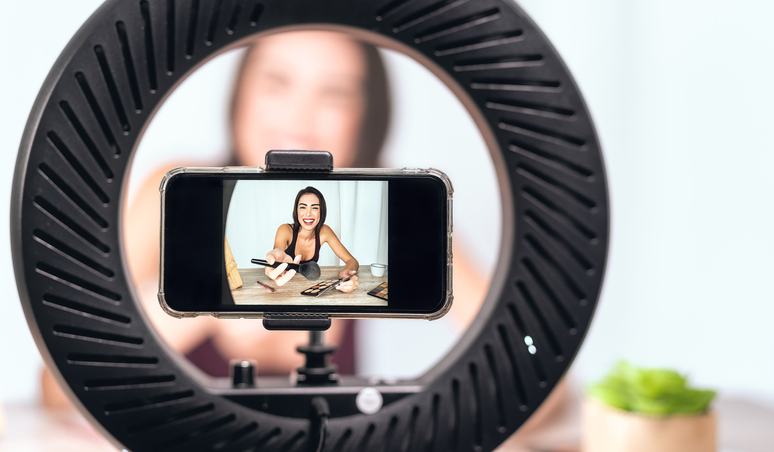As we all know, trends in digital marketing come and go. Take influencer marketing for example. We last wrote about it in 2020. Our article The rise and rise of influencer marketing covered the background to influencer marketing, the different types of influencer marketing, and how to implement a successful influencer marketing strategy.
But that was 2 years ago. And therefore there could reasonably be an expectation that the influencer marketing bubble should by now be about to burst and be replaced by something else altogether.
Except that’s not quite what’s happening. Recent research by the Influencer Marketing Hub discovered that 90% of marketers still believe influencer marketing to be effective. As a result, over 75% plan to increase the proportion of their content marketing budgets spent on influencers.
Not only that, but 72% of marketers claim that influencer marketing results in higher quality customers. The likely reason for this is that around 82% of consumers trust the opinions of others – family, friends and influencers – when making purchasing decisions; and 49% of consumers depend almost exclusively on influencer recommendations. So when a customer reaches out to your brand through the influencer route, they are already likely to be very interested.
In this article we take a quick look at five ways to use influencer marketing effectively in 2022.
Influence over multiple platforms
A growing trend in influencer marketing is to use the same influencer over multiple platforms. An influencer may have their own preferred social network, but it will be more benefit to you to use multiple platforms. This is likely to attract their fans onto those platforms and create a seamless interaction across them.
Instagram is the main influencer channel currently used by marketers, with 48% of marketers using it as their main influencer marketing channel in 2021. However, running a very close second is TikTok at 46%. The next most popular channel is YouTube but that is way behind the frontrunners, with only 6% of influencer marketing spend.
The most popular format for influencer marketing is short video – of between 30 and 60 seconds – and this is likely to increase further in 2022. 72% of people prefer watching video to reading text, and video engagement rates can be as much as double that of static content.
It remains to be seen whether new types of media such as AI will make a difference to the type of content shared by influencers over the coming months. But it seems certain that the exponential growth of influencer marketing across multiple platforms is set to continue.
Use an influencer long-term
Another growing trend in influencer marketing is for companies to work with the same influencer for a protracted period of time, and across multiple campaigns. Over 56% of marketers have done this.
Many influencers take this on board by carving out a particular niche for themselves, for example in a particular industry or vertical sector. In which case it makes sense to hang onto them long-term and use them in multiple ongoing campaigns. This is a successful way of building trust for your brand with their audience.
Live stream your influencer
Live streaming is a great way of achieving higher engagement rates. Promoting a product to a live audience enables it to be demonstrated and reviewed in real time, and questions to be answered along the way.
An added dimension to live streaming is to enable live shopping. Instagram, TikTok and Facebook all have livestream shopping tools which are becoming increasingly popular. Some estimates value projected live streaming sales as likely to reach £400 billion by 2023.
Keep with current social trends
In our recent article Five key digital marketing trends for 2022 we explored some of the key issues – such as social responsibility, diversity and inclusion – that need to be incorporated into digital marketing in 2022. This is also an important consideration when choosing your influencer.
Instagram and TikTok are two of the main platforms that have been working to highlight some of these social issues, and your influencer marketing strategy needs to dovetail with this. Brands will increasingly be expected to take a stand on key social issues, and influencers will also be under the spotlight.
So choose your influencer(s) wisely, and ensure that they are not only mindful of current trends, but willing to represent your brand in the way you would want them to.
Measure your influencer’s worth
A final consideration of how to use your influencer effectively is to ensure that they are proving their worth. In theory, an influencer should be able to bring you the following tangible and measurable benefits:
- ROI: Many businesses have seen a ROI of up to 500% or more. Which is why around 42% of marketers consider influencer marketing a top ROI-generating strategy.
- Engagement : 77% of marketers measure the success of their influencer campaigns using engagement. Interestingly, the highest engagement rates – around 7% – can be generated by micro-influencers
- Sales : We have already seen the weight placed on the opinions of influencers during the purchase process. This is endorsed by Twitter, who found that Tweets from influencers generated 5.2% more purchase intent than Tweets from brands or companies.
So in this brief look at current developments in the world of influencer marketing, it is clear that the trend is not going to disappear any time soon, and that 2022 is a good time to start using influencer marketing effectively if you are not already doing so.
We hope that this article has been helpful. Do check back in with us soon at Xcite Digital.
